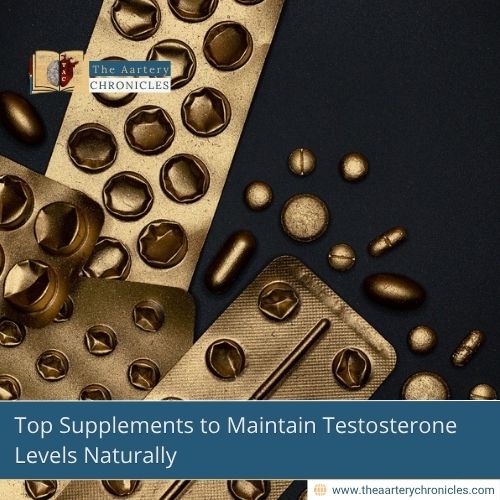

Monosodium Glutamate (MSG): Its Role in Flavour and Health
Summary
- Monosodium Glutamate (MSG) is a commonly used food additive in commercial foods
- MSG gives a specific umami flavour to the food preparations, making them highly palatable
- The use of MSG has recently increased, and it is now a widely used ingredient in processed foods
- However, MSG has been associated with several issues such as metabolic disorders, neurotoxic impacts, Chinese restaurant syndrome, Obesity, etc.
Introduction
People have been using Monosodium Glutamate (MSG) for many years now. It is widely used in Chinese preparations, soups, canned vegetables, and several processed food items. In recent years, this food additive has gained a reputation for harming health. It is associated with a multitude of symptoms such as back pain, neck pain, nausea, chest tightness, diaphoresis, etc. [1]
What is MSG?
Monosodium Glutamate or MSG is a synthetic salt derived from a non-essential amino acid. It is a sodium salt of L-glutamic acid that enhances the meaty, savoury or ‘umami’ flavour, a significant characteristic of Asian cuisine. Glutamate is present naturally in several foods, such as hydrolysed vegetable protein, as protein-bound Monosodium Glutamate (MSG) in yeast extract, tomatoes, mushrooms, meat and cheese. Moreover, other sources in the diet are due to added MSG, which has a varied daily intake based on cuisine and country. MSG is also used as a food preservative because of its antioxidant properties. [1]
The U.S. Food and Drug Administration (FDA) considers MSG safe for consumption within specified limits. However, some individuals may have adverse reactions, so the FDA mandates that MSG be listed on the product packaging when added. [2]
The Origins and Commercialisation of MSG
For over a century, Laminaria japonica, a seaweed, has been used as a flavour enhancer in Japanese cuisine. MSG is responsible for its particular taste. In the year 1908, Ikeda identified MSG for the first time in the seaweed Laminaria japonica, with the process of aqueous extraction and crystallisation. This particular plant was used in Japanese cooking to make soups and dishes that were reported to have a specific taste, significantly different from all the basic tastes known as ‘umami’ [3]
Ikeda analysed MSG in comparison with other Glutamate salts, including potassium, calcium, ammonia and magnesium. But the sodium salt was found to have remarkable palatability, crystallisation capacity and solubility. In 1909, Kikunae Ikeda and Saburosuke Suzuki began the commercial production of monosodium glutamate (MSG), marketing it under the brand name Aji-no-moto. [3]
The Chinese restaurant syndrome (Kwok’s syndrome)
Using Monosodium Glutamate (MSG) has been controversial over the past 3 decades due to the reports of adverse reactions in people consuming food containing MSG. The phrase ‘Chinese restaurant syndrome‘ was coined over three decades ago to describe a cluster of symptoms such as heart palpitations, numbness starting in the neck and extending to the back and arms, and general weakness, that some individuals report after consuming Chinese cuisine. Kwok described the ‘Chinese restaurant syndrome’ for the first time in 1968 as symptoms he experienced himself.
Reportedly, Monosodium Glutamate caused these symptoms, which were later extended to:
- Headache
- Tignling
- Weakness
- Stomachache
- Flushing
- Nausea
- Vomiting
Another similar instance is of a 36-year-old man who experienced palpitation, sweating and severe weakness 30 minutes after consuming wonton soup. The man had ventricular tachycardia and was converted to normal rhythm after administering lidocaine. Several such reports were noted later. [4] [5]
The mechanism of flavour enhancement
- Glutamate, released when MSG dissolves in food or saliva, binds to specific umami receptors (T1R1/T1R3) on the tongue.
- This interaction alters the receptor’s shape, initiating the perception of umami taste.
- It activates a G protein-coupled signalling pathway, which opens ion channels and leads to the release of neurotransmitters.
- These neurotransmitters stimulate nerve fibres, sending signals to the brain that recognise the savoury flavour.
- When combined with MSG, certain molecules called kokumi substances can amplify this effect, adding depth and richness to complex dishes. [6]
MSG And Sodium
Although it is best not to consume packaged food items that contain MSG, the food additive can potentially help us reduce the amount of sodium required when cooking at home.
Even though it has ‘sodium’ in its name, MSG contains only 12.28 g of sodium per 100 g. MSG contains roughly one-third the sodium of regular table salt. By substituting half a teaspoon of table salt with an equal amount of MSG, it’s possible to cut sodium intake by around 37% without compromising on taste. It can help enhance the perception of saltiness while reducing sodium content at the same time. [7]
Is MSG bad?
The FDA ordered the Federation of American Societies for Experimental Biology (FASEB) to investigate MSG’s safety in the 1990s. MSG is safe, according to FASEB. They pointed out that any negative effects were moderate and temporary, and they were usually linked to high doses of MSG (more than 3 grams) ingested without food.
Most recipes use just 1/4 to 1/2 teaspoon of MSG per pound of meat, so it’s unlikely you’d consume enough to have any noticeable effect. Additionally, most individuals don’t absorb MSG on their own. [7]
Why must we limit foods with MSG?
There are reasons to avoid consuming foods that contain MSG, even though the component itself is not toxic. MSG-containing foods are often highly processed and tend to have high levels of fat, sodium, and other unhealthy refined ingredients. When monosodium glutamate appears on an ingredient list, you should examine other ingredients and think about making that item at home or finding a healthy substitute. [7]
Health effects of MSG
Both animal and human studies have concluded the toxic effects of MSG even at the lowest dose. Estimates suggest the average daily consumption of MSG is between 0.3 and 1.0 grams. These levels can disrupt neuronal activity, potentially causing negative behavioural effects. Additionally, research in rodents has shown that MSG can induce insulin resistance and lower glucose tolerance, which may increase the risk of obesity. [4]
Some associated health outcomes linked with high consumption of MSG include:
- Neurotoxicity
- Reproductive toxicity
- Oxidative stress
- Metabolic disorders
- Cardiotoxicity [4]
- Monosodium Glutamate | Food additives and asthma | (ScienceDirect)
- What is MSG? Is it bad for you? | (MayoClinic.Org)
- Glutamate - A multifaceted molecule | Review | (ScienceDirect)
- Extensive use of monosodium glutamate: A threat to public health? | (pmc.ncbi)
- Chapter: Monosodium Glutamate | General Information | (ScienceDirect)
- The science behind monosodium glutamate: Flavor modulation, food palatability, and potential health effects
- Monosodium glutamate (MSG): What it is, and why you might consider avoiding foods that contain it | (Harvard Health)









